This post contains affiliate links. If you make a purchase through these links, I may earn a commission at no extra cost to you. Thank you!
The Faroe Islands has seen a marked increase in tourism over the last few years. This once undiscovered archipelago now has one of the fastest growing tourism industries in Europe, and with two airlines that fly cheaply from many places in Europe (and soon America too), it has become very accessible. The Faroe Islands are no longer an off the beaten path destination.
Personally, I have mixed feelings about this rise in tourism. I travelled there before the hype started so I’ve watched the industry grow and grow and grow. I love sharing about the Faroes and inspiring others to go, but at the same time I miss the good ol’ days when the ferry to Kalsoy wasn’t constantly overcrowded and when hiking anywhere meant being completely alone (sheep excluded).
Those times are no more. Tourists flock to the country year-round, although the summer months get the majority of them. Lucky for me, that’s usually when I don’t have time to go. But the locals always have to deal with it, and quite frankly, some of them have had enough. Most locals and tourists have heard of the ‘Saksun man’, who lives in a farm above a very popular instagram spot, the lone turf-roofed cabin in front of the coastal lagoon in Saksun. He has struggled for years with tourists violating his private property, climbing over fences, trampling through his fields and looking in his windows. You might argue that his methods are wrong (such as apparently taking aim at a drone), but I get it. I get his frustration. Even after he put signs up telling people to stay away, a quick instagram search shows that people still take pictures of the cabin. And from that popular angle, it’s impossible to do so without trespassing or flying a drone (and Saksun is a no-drone zone).
But he is not alone in his frustrations. Recently, some of the most popular hikes have become restricted, with some landowners charging ridiculous fees and some only permissable to hike with a (very expensive) guide. Many more are sure to follow. The reason for this is that most land on the Faroe Islands is privately owned, so the owner gets to decide who hikes when and where. It has actually always been like this, but back in the days it wasn’t a problem if people didn’t ask for permission beforehand as the numbers were low, and therefore the impact was minimal.
While most locals welcome the rise in tourism, most agree that the Faroe Islands must not turn into a new Iceland. But with the planned upcoming transatlantic route from New York and the growing popularity of the country, I suspect it will get much worse, and I’m afraid the industry and the locals won’t be able to handle it.
A big part of the problem is lack of information. Most tourists don’t even realize that much land is privately owned and thus, they walk everywhere thinking it’s public land. This is where Visit Faroe Islands has failed greatly as they haven’t provided this information, maybe out of fear that it would hurt the industry. There should be more information available for tourists so they all have a chance to be aware of the regulations and restrictions. But until that happens, you can use this post to find information about restricted places as I will update it whenever there’s new information.

Why did the Faroe Islands get so popular so fast?
The total solar eclipse of 2015 put the Faroe Islands on the tourism radar, and Visit Faroe Islands launced a huge campaign in connection to it. Instagram influencers were invited by the company in great numbers, rapidly growing the number of people the islands became exposed to. And the Faroe Islands is gorgeous – it’s no wonder it has become popular.
What are the downsides to tourism in the Faroe Islands?
Quite frankly, it happened too fast. Nobody could keep up, not even Visit Faroe Islands. They wanted more tourists, ran aggressive marketing, invited hundreds of influencers for free trips, all of whom took the same pictures of the same places. Suddenly, busloads of tourists started arriving at the tiny villages such as Saksun and Gásadalur, outnumbering the locals by far each day. Saksun, for example, is so overrun that the local farmer has asked authorities to close the village for tourists on certain days (without success). Mountain paths have been destroyed, bird nests have been trampled on and many tourists have died because they didn’t understand the dangers of the mountains.
In Tórshavn, huge new hotels have been built to accommodate tourists when there’s a general housing shortage in the city. The Faroe Islands is changing drastically, and it’s not on the terms of the locals, but of the tourists and tourism companies. The locals can only stand by and watch as their country turns into a mini-Iceland.
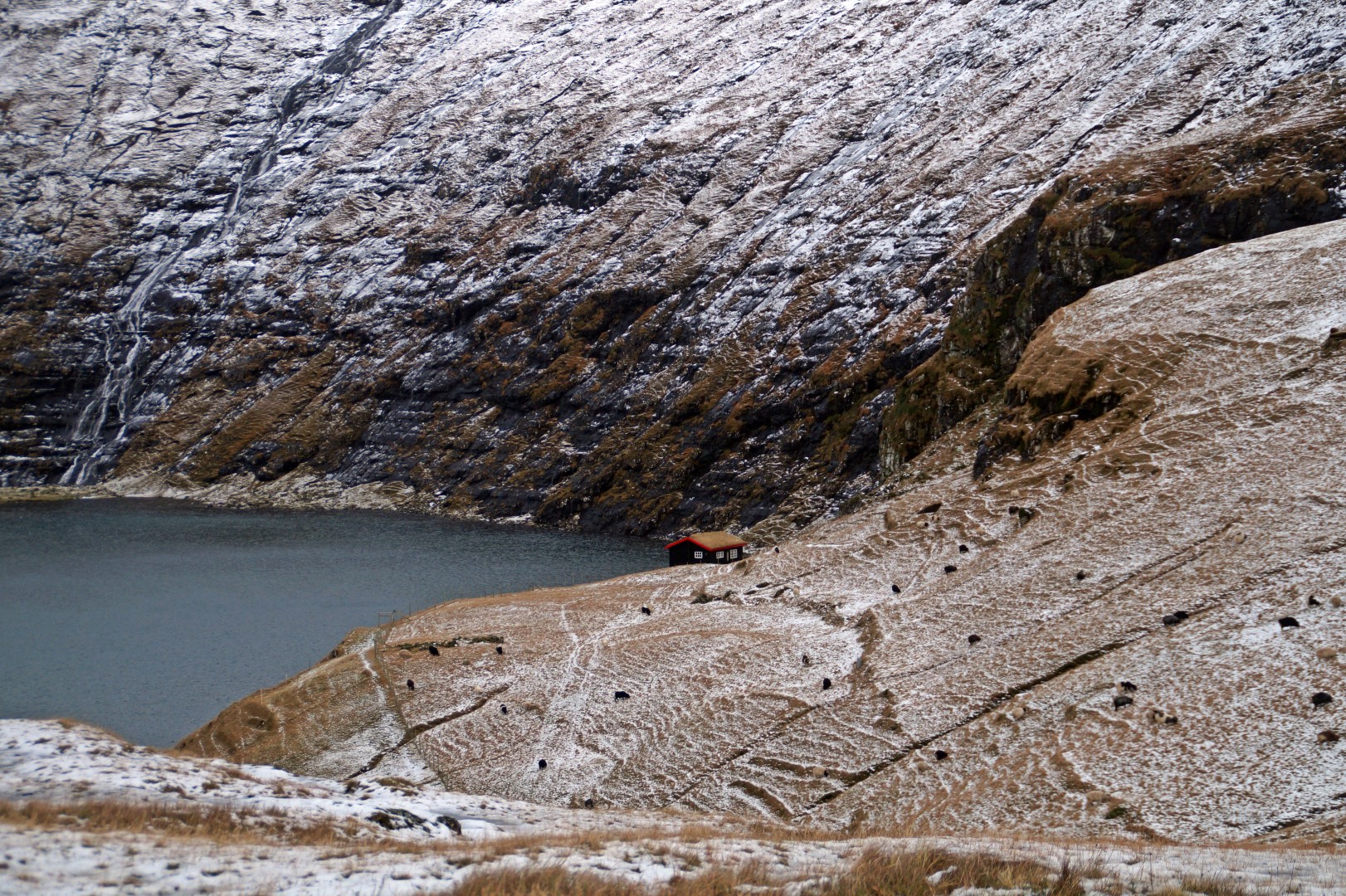
What is being done in response to this?
Tourists now have to pay for some of the most popular hikes (see the list below). It’s very expensive, and while some of the money will (hopefully) be spent preserving the land and wildlife, and some of it pays the guides, most of it must be going straight to the landowners. I understand wanting to profit from the rise in tourism, but personally, I don’t agree with the high prices, but it’s up to the landowners to make that choice. I believe charging 450-550 DKK for short and easy hikes where a guide is not necessary is ripping tourists off and leading to disneyfication of the Faroe Islands. 50-100 DKK for maintenance would be fair especially given the popularity of the places, but anything above that is not really worth paying for.
On Mykines, the authorities have decided that any visitor must be accompanied by a guide while on the island. The price seems to rise every year (first it was 100 DKK, then 250 DKK and now it’s up to 400 DKK!). I can only hope that the money goes towards preservation of nature, protection of birdlife, and creation and maintenance of hiking paths. But I doubt that the current price is worth it, especially when most tourists visit Mykines to see puffins which can be seen on several other islands – for free!
In 2019, Visit Faroe Islands did a campaign called “Closed for Maintenance”, where popular hiking trails all over the country were closed for tourists, apart from voluntourists who got a hotel room and food in return of a weekend of maintenance work. Hiking trails were restored or created, fences were put up for security, cairns were built and placed along the trails. It was a great initiative and thankfully a great success which they have been repeating every year since!

So which hikes are restricted?
Lake Leitisvatn to Trælanípan and Bøsdalafossur, Vágar
This is easily the most popular hike amongst foreigners – and maybe even locals – in the Faroe Islands. The easy hike costs 200 DKK for adults and 50 DKK for children aged 7-14 without a guide, which can be paid by credit card or cash at the gate. If you wish to hike with a guide, you can do so every day year-round at 9 AM, 12 PM and 3 PM. The guided hike costs 450 DKK for adults and 150 DKK for children aged 7-14. Children aged 6 or younger can go for free, both on the guided trip and when hiking without a guide. Book a guided hike here.
Alternatively, kayaking on Lake Leitisvatn is a fun way to reach the popular viewpoints!
Alternative hike
Climb Mt. Ritubergsnøva for an alternative view of the Trælanípan cliffs and Lake Leitisvatn that you’ll have all to yourself. Or hike along the other side of the lake for unique views of the Bøsdalafossur waterfall and the Trælanípan cliffs in the background.

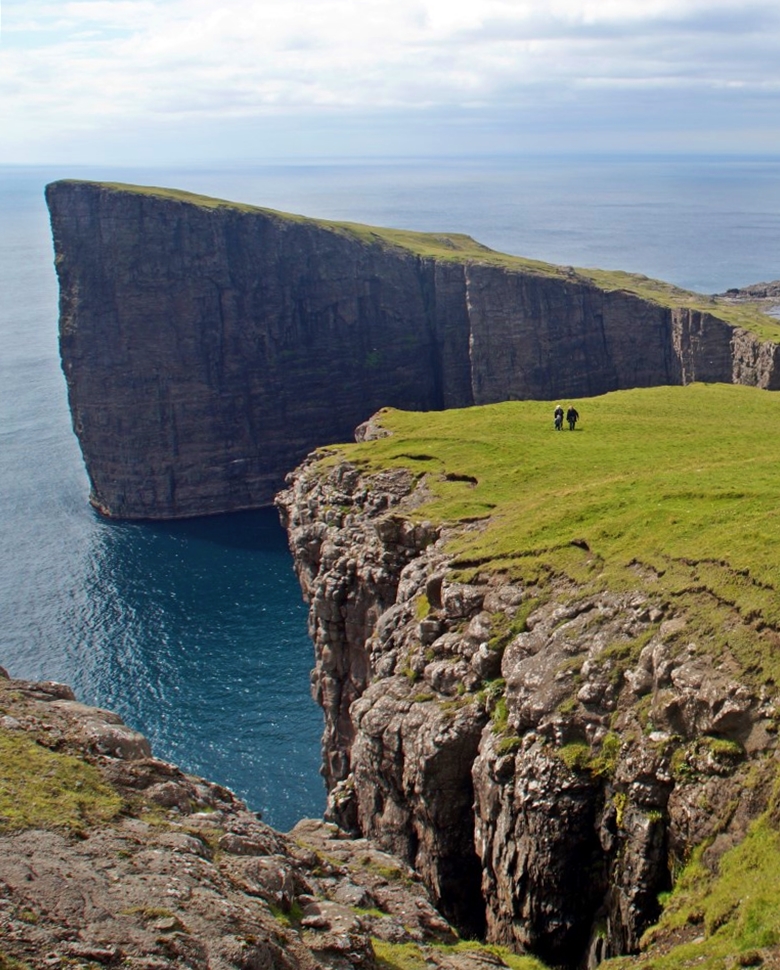
Viewpoint of the Drangarnir sea stacks, Vágar
This insta-famous hike is only open for guided tours on Wednesdays, Saturdays and Sundays at 11 AM from April 1st to October 1st. Tours out of season can also be requested. The tour takes about 5 hours and costs 600 DKK per person. Read more here.
It is NOT permitted to do this hike without a guide. However, there is a way around it if you’re lucky. In October 2020, a friend and I did this hike independently and for free after calling the landowner and asking for permission. I spoke Danish to him which might’ve helped, and it was in the off-season, but even if you don’t speak Danish and/or are travelling in the summer, it’s worth a try. Give the landowner a call, but do respect a no. His name is Gutti Guttesen and he can be contacted on +298 22 30 72.
Alternatively, consider kayaking out to the sea stacks or going on a boat tour. Both are sure to give you unique perspectives!
Alternative hike
Climb Mt. Høgafjall for incredible views of Tindhólmur and Mykines. The landowner above should be contacted prior to this hike too, though!


The hike to the Dunnesdrangar sea stacks, Vágar
The viewpoint of the Dunnesdrangar sea stacks has become increasingly popular in recent years, and in 2023, it was closed off for hikers. If you want to visit this hotspot, you have to book a guide for 450 DKK. You can book a guided tour here.
Alternative hike
The view may not be as dramatic as Dunnesdrangar, but I think that the area around Skarðsáfossur is just as beautiful and fun to explore. The waterfall is just as beautiful as the famous Múlafossur, and the sea in front of it is full of skerries and hidden black sand beaches.

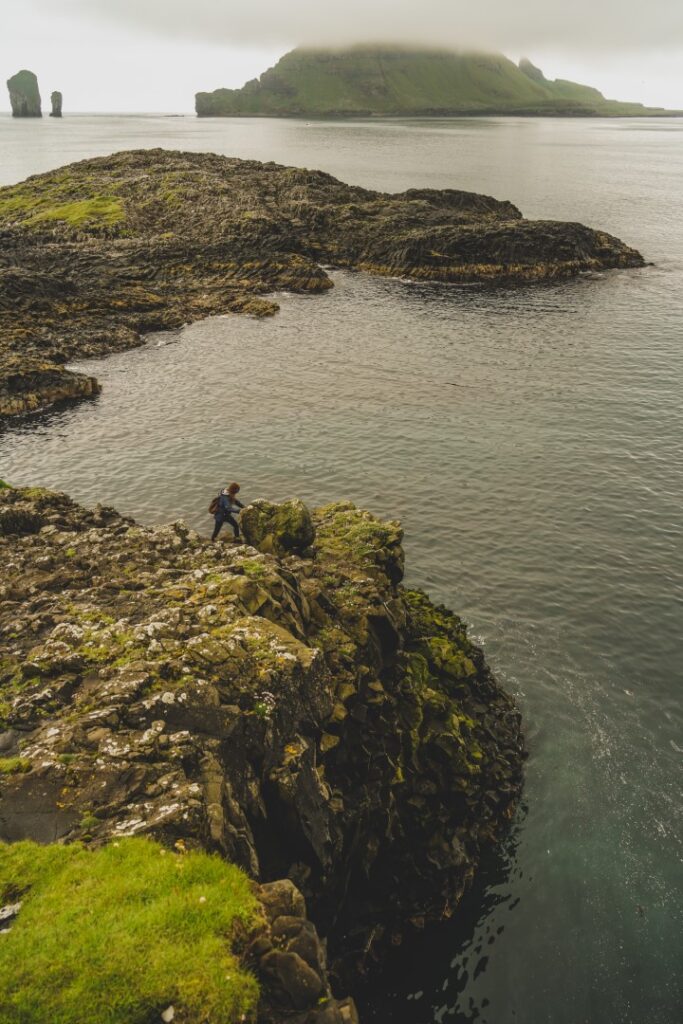
The hike to Kallur Lighthouse, Kalsoy
Hiking to the iconic Kallur Lighthouse (as well as James Bond’s tombstone) costs 200 DKK per adult and 100 DKK for children aged 13-17 (those aged 13 and under hike for free). The fee can be paid by credit card at the site. This fee does not include a guide.
If you prefer to hike with a guide, this tour might be for you – or alternatively this private tour, which includes transport to/from Tórshavn and food and beverages! If you have a lot of money to burn, you could also consider this exclusive helicopter tour to the lighthouse and James Bond’s tombstone!
Please note that the trail is only open from 9-6 PM Monday-Friday, 9-5 PM on Saturdays and 11-5 PM on Sundays.
Alternative hike
There are beautifully situated lighthouses all over the Faroes – but one of my favourites is Slættanes Lighthouse! Located in the remote far northern corner of Vágar near the abandoned village of Slættanes, this hike is not only incredibly beautiful but it also gets you away from the crowds!
There are a few ways to get to Slættanes and its lighthouse. The quickest route is along the coast from Oyrargjógv where you’ll have to follow sheep trail hugging the coastline. The slightly longer route from Sørvágur is easier and safer. Alternatively, you can also hike from Gásadalur or Sandavágur – or you can combine the two routes into a gorgeous two-day hike!


The hike up Villingardalsfjall and Enniberg, Viðoy
The price for the challenging climb up Mt. Villingardalsfjall is 200 DKK per person, which does not include a guide. The money can be placed in the mailbox by the gate leading to the trail.
If you wish to hike to Enniberg as well, you must book a guide which will increase the price significantly. You can book a guided tour here. Alternatively, you can take a fun rib boat tour to see the cape from the ocean!
Alternative hike
The mountains of Kunoy offer equally challenging climbs and similarly incredible views of the Northern Isles. Just be careful if hiking without a guide on Kunoy as all the mountains are steep and difficult to climb!


Above the gorge in Gjógv, Eysturoy
This hike costs 50 DKK per adult, which does not include a guide. The money can be placed in the mailbox or transferred to a bank account. However, you can still view the gorge from the village and walk to the end of it on both sides without paying a fee.
It’s also possible to do this hike with a guide – read more here!
Alternative hike
Ásmundarstakkur on Suðuroy offers incredible views of two gorges, breathtaking cliff formations, and the opportunity to cross a gorge via a tiny bridge!
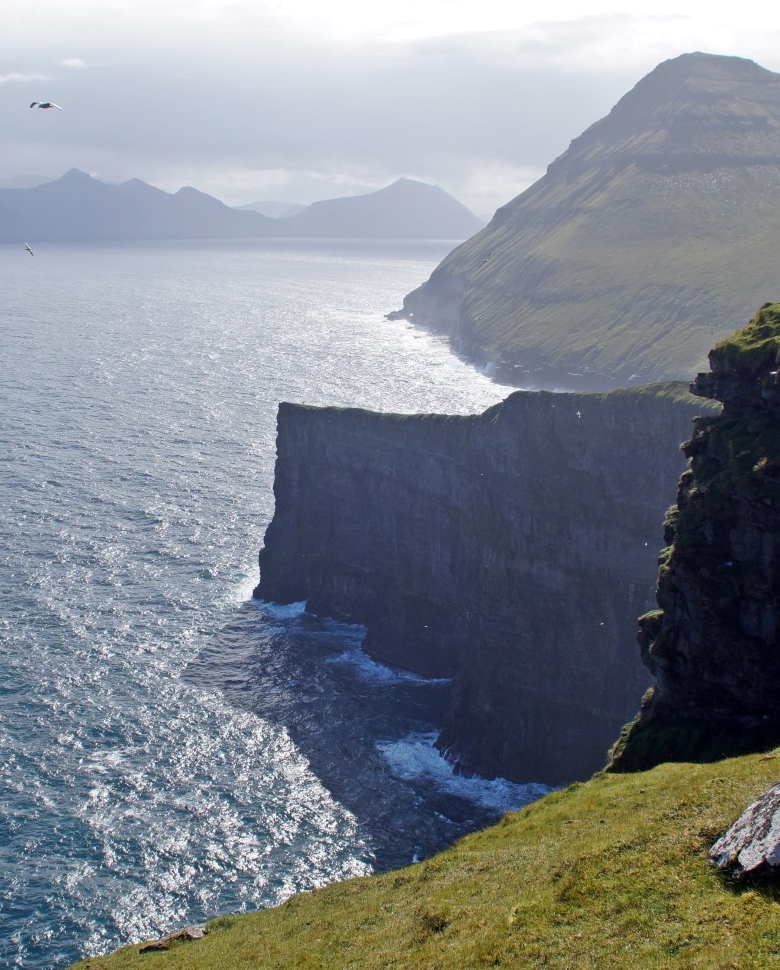
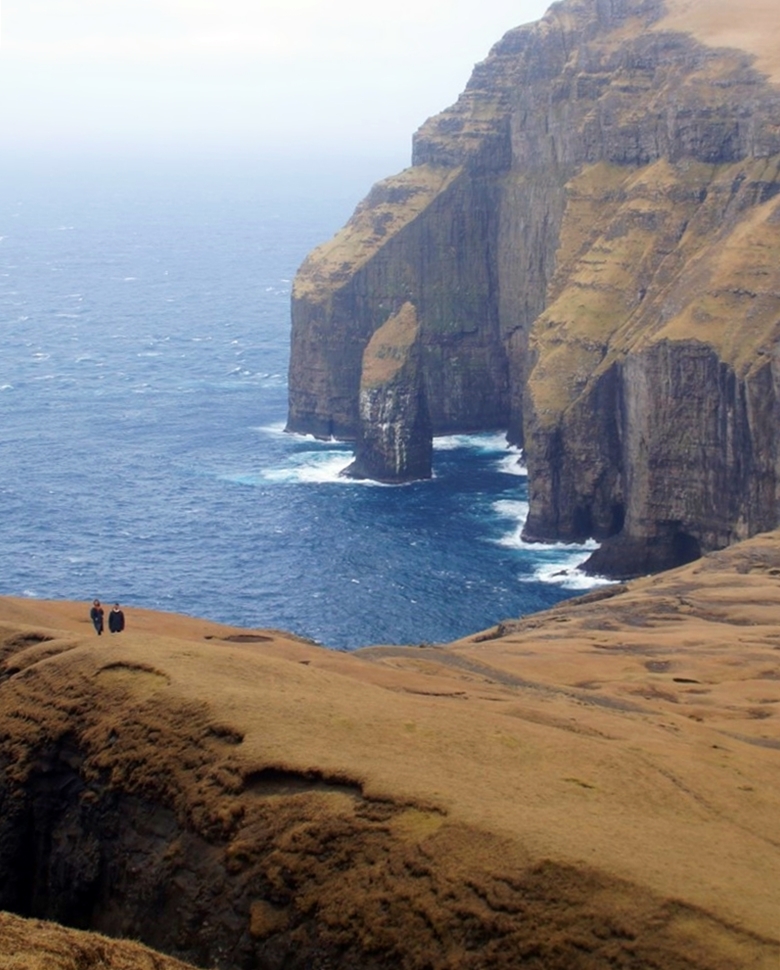
The beach walk in Saksun, Streymoy
This popular walk to the black sand beach in the lagoon of Saksun costs 75 DKK per person to undertake (locals and tourists alike, including children). The fee can be paid by credit card at the gate.
Alternative hike
The island of Sandoy offers beautiful black sand beaches, turf-roof houses and many wonderful hikes.

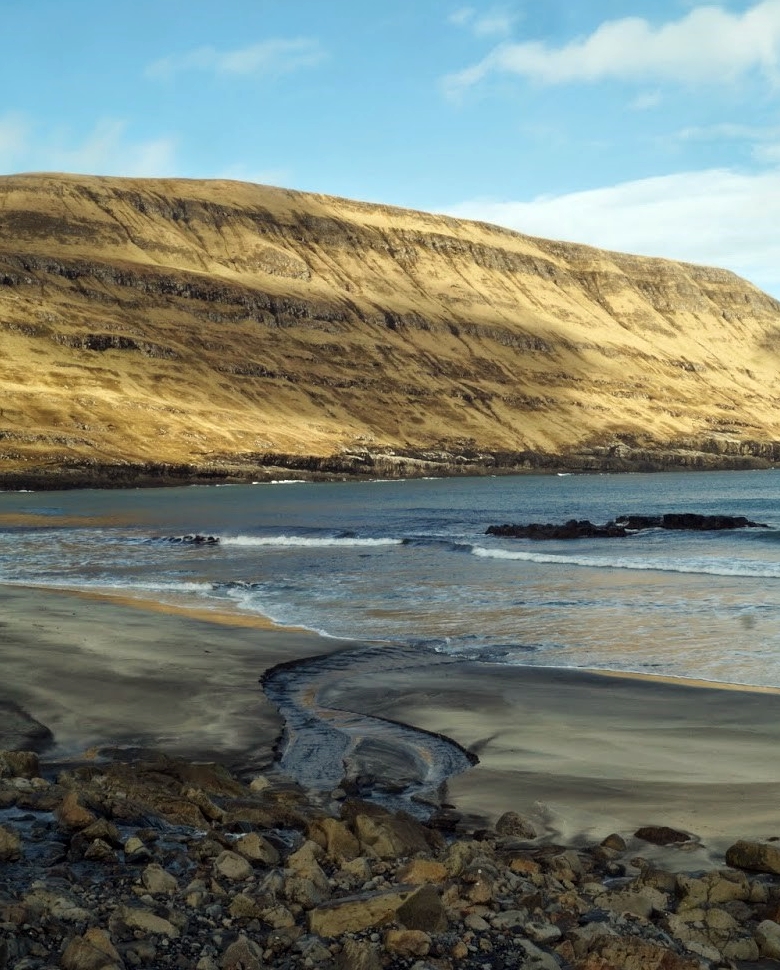
Hiking on Mykines
Between May 1st and August 31st (when the puffins are on the island), a guide is required to visit the island of Mykines. It costs 400 DKK if you book online prior to arrival on the island, or 500 DKK on arrival. The guide can be booked on mykines.fo. Please note that Mykines is notorious for ferry delays and cancellations, and you probably won’t get your fee refunded (this happened to me in 2018!).
Alternatively, you might want to consider a package tour which includes the ferry ticket, hiking fee, lunch and a guide. Read more here!
It’s important to note that the section of the path out to the lighthouse is currently closed, however, the section out to the puffin colonies is still open.
Alternative hikes
Høvdin on Skúvoy and Stongin on Nólsoy are two unknown puffin paradises on the Faroe Islands! Both places have a puffin guarantee in the summer, especially in the mornings and late evenings – and besides the cheap ferry fee, they’re free to visit!
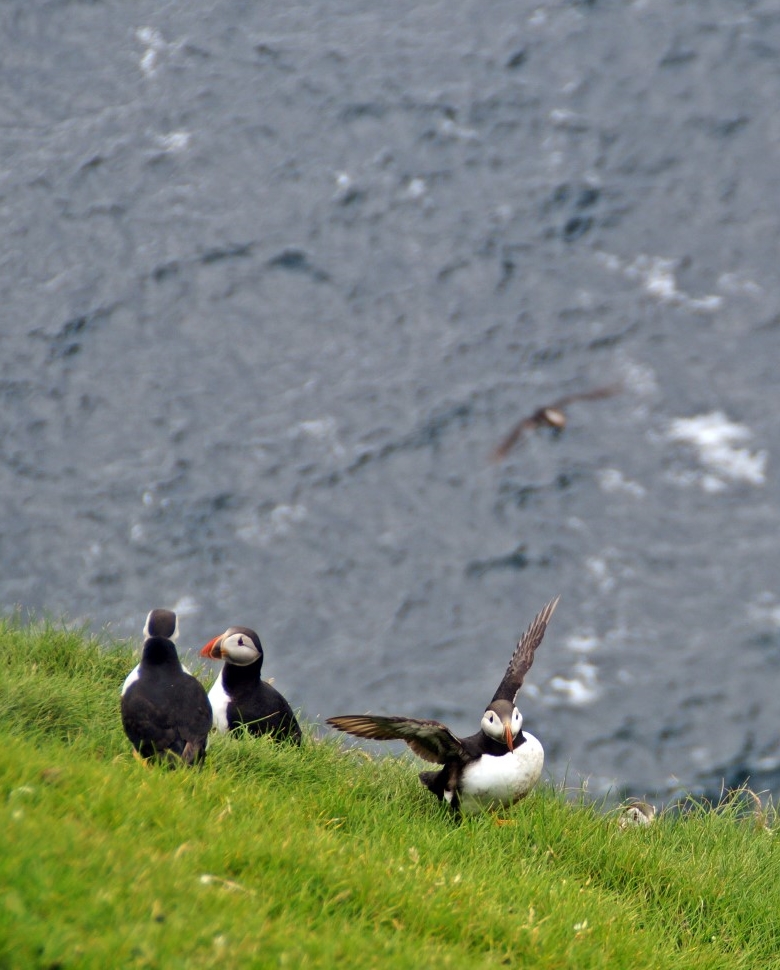

Special restrictions for hiking on Nólsoy
There is a fee of 100 DKK per person for commercial hikes on Nólsoy, i.e. hikes that are organized by a business. The permit can be purchased by contacting Visit Nólsoy. It is therefore still possible to hike for free on Nólsoy, if you do so on your own.
Alternative hike
None needed! There really is no alternative to Nólsoy. It’s one of my favourite islands, and I think you’ll understand why when you get there (tip: head to the east coast)!

Which other places might soon be restricted?
Trøllkonufingur, Vágar
I heard from two locals that this popular place might soon be either closed completely or open for a fee.
Mulafossur Waterfall in Gásadalur, Vágar
Some locals told me that the landowner might soon start charging tourists to view the popular waterfall.
PLEASE NOTE: I have heard from a landowner on Nólsoy that all landowners of the country are considering closing off their land, so it may soon become mandatory to pay everywhere in the Faroe Islands – apart from the village to village hikes which are public. Keep yourself updated on this page.
Where am I allowed to hike for free?
All the trails that connect villages or former villages (such as Saksun-Tjørnuvík or Bøur-Gásadalur) are public and therefore free to hike, and will remain so. If you wish to hike on private land, it would be best to ask for permission from the landowner or ask another local beforehand. Contact hiking@hiking.fo or Visit Faroe Islands to find out who the landowner is.
Don’t damage fences, don’t litter, be kind to the sheep and birds you encounter and respect the landowner if he tells you to leave. If you see a sign that tells you to stay out, respect it, unless you have the owner’s permission.
PLEASE NOTE! You could receive a fine of 1000 DKK if you walk on private land without permission!

What are some other possible solutions for healthy tourism?
My concerns with the current situation is that the tourism industry will suffer, which might hurt the Faroese economy. I hope that tourism stays the same as it is today, without it becoming anywhere near like Iceland. But my biggest concern is that the nature will suffer if tourism numbers keep increasing without anything being done to preserve the natural environment. The Faroese authorities might want to rethink the way they’re dealing with overtourism. Here are some examples on possible solutions:
The Komodo Model
After 41 Komodo dragons were stolen from the island, it has been decided to close the Komodo Island for tourism for the entire year of 2020. This is both in response to the theft and to give the government enough time to conduct conservation to ensure the food stock of the protected Komodo dragons and preserve the nature, with the aim of increasing the population of Komodo dragons. This move is very drastic, especially considering the fact that tourism in the Faroe Islands has just started up, but it might be necessary in some places in years to come. The birds of Mykines have already suffered because of increasing tourism, so the government of the Faroe Islands might have to consider closing the island for tourism for a considerable amount of time in order to protect the birds.
Closing all popular hikes from e.g. 5 PM to 10 AM
A less drastic version of the Komodo Model would be to close the most affected areas for a certain time period every day in order to give the nature, the sheep and the wildlife a break.
More marked hiking trails
Creating more marked hiking trails to mountain summits or popular viewpoints on private lands where everyone could walk for free or for a small fee would certainly limit the amount of people walking illegally throughout the country. This would also prevent the destruction of nature and people getting hurt in the mountains.
A tourist hiking pass
Another solution is to sell tourist hiking passes that allows tourists entrance to private property (by agreement with landowners, of course). A suggested price could be 200 DKK for a week or 50 DKK per day, with most of the money going towards preservation. Anyone hiking on private land without a pass would have to pay a fine.
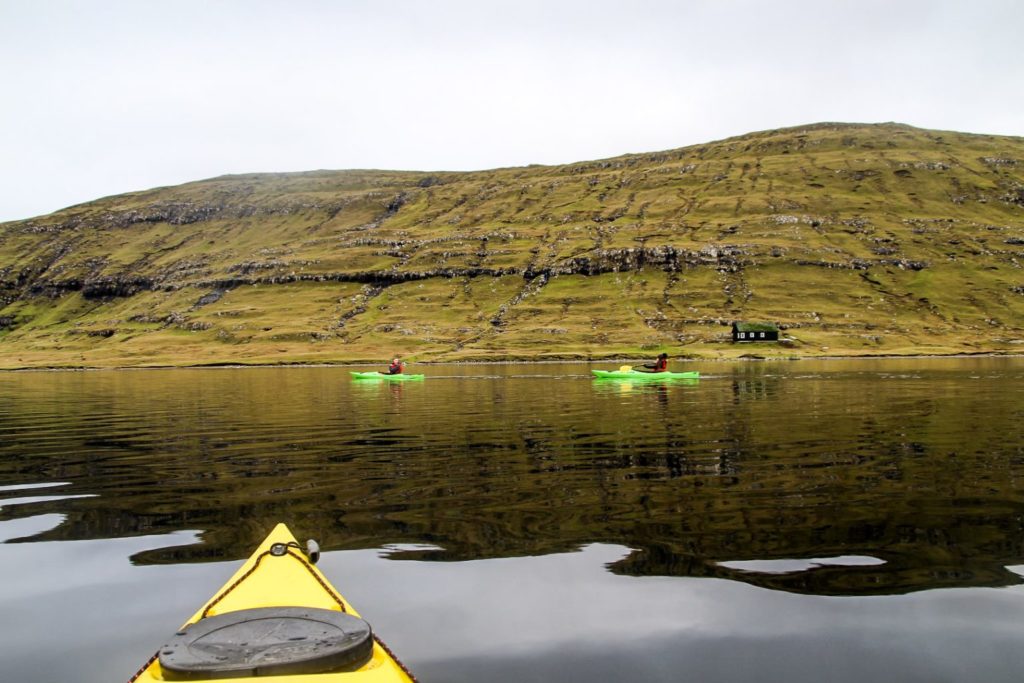
What can I do to be a responsible tourist on the Faroe Islands?
At the moment, most areas are technically open for hiking, but there are a number of things you should do to be a responsible tourist on the Faroe Islands in order to not contribute to the destruction of nature and resentment towards tourists from locals:
- Respect the locals and local customs (this includes the controversial whale slaughtering).
- Don’t be rude and accept a no or request to pay from the owners of the lands you wish to hike on.
- Stay on the paths (or sheep trails) and do not litter.
- Respect nature, wildlife and domestic animals.
- Don’t fly a drone in the no-drone zones (see the zones here).
- Educate fellow tourists if you see wrong-doings.
- Be cautious and sensible when hiking in the mountains.
- Let someone know when and where you’re going for the sake of your own safety.
- Try to visit less popular destinations to give the popular places a break. Everywhere on the Faroe Islands is beautiful and some of the most gorgeous places are still undiscovered by the masses.
- Consider doing sailing trips, kayaking or horseback riding instead of hiking – that way you support local businesses and see the sights from a different perspective!
- Enjoy the Faroe Islands, make some beautiful memories and take lots of pictures!
Updated 08/09/2023
Leave a Comment
Pingback: Beyond Instagram: 15 hidden gems to discover on the Faroe Islands – Northtrotter on 23/05/2019
Pingback: My May 2019: From the Faroe Islands to Russia – Northtrotter on 23/05/2019
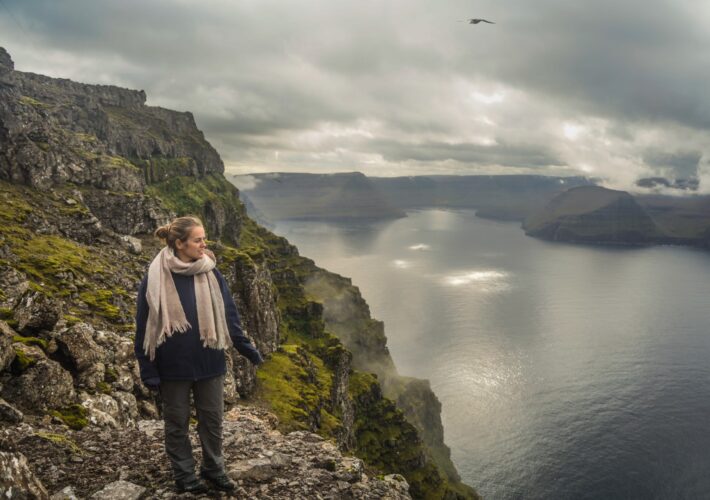
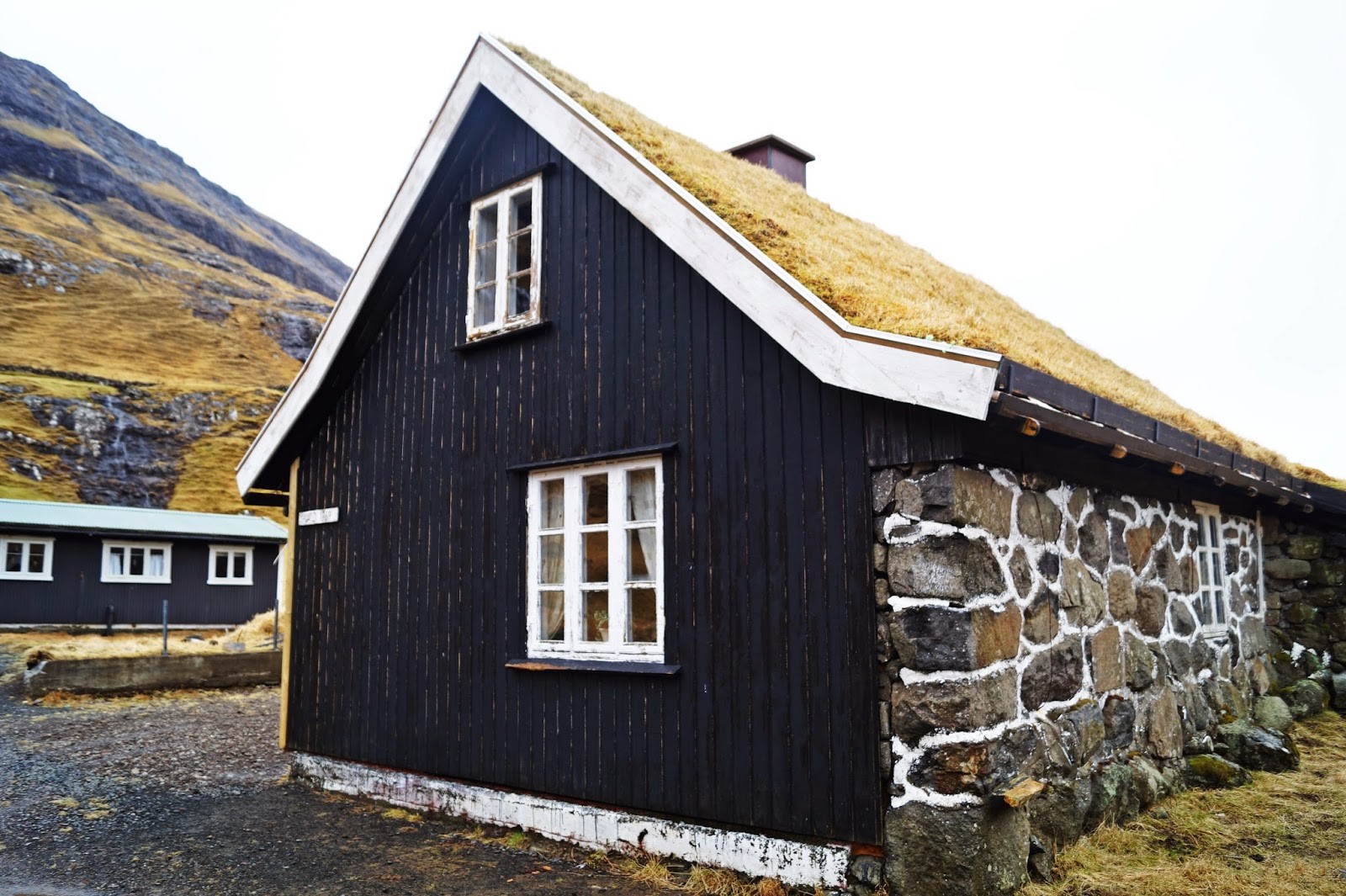
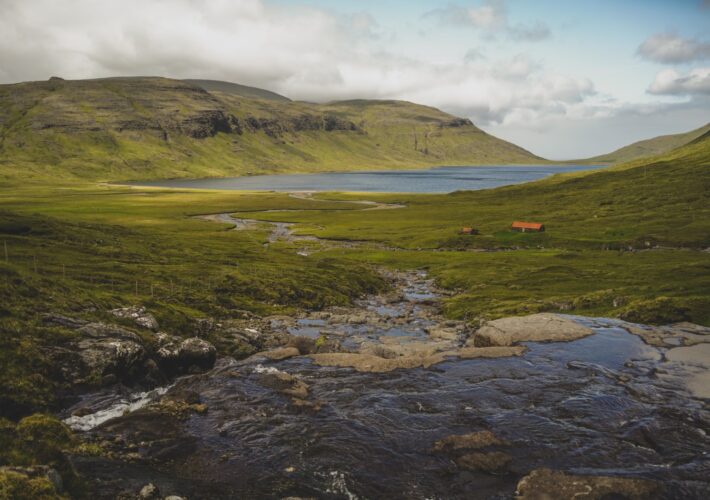
24 COMMENTS
Aitana
1 year agoSuch a nice post! Keep going!!!!!!
Mel
1 year ago AUTHORThank you so much! 😀
Kelsey
2 years agoKallur Lighthouse hike on Kalsoy costs 200DKK per adult and can be paid by credit card.
Mel
2 years ago AUTHORYeah, that’s unfortunately a new thing that just started this summer :/
Dimitri
6 years agoI fully agree with this article. I have returned to these islands for the first time since 20 years and it changed a lot. We were almost alone at places such as Saksun and Kalsoy at that time and certainly never had to pay any fee for hikes.
Melissa Cherry
6 years agoUnfortunately, many places in the North are turning this way. I hope the tourism development will come to a standstill very soon, especially in the fragile Faroe Islands.
Philippe
6 years agoI don’t know what I would do to tackle the overtourism problem if I were in the shoes of the tourism board. There is likely no easy solution. But personally, as a freedom-loving hiker from the Alps, I would not consider hiking in a group, not because of the cost but because of the constraints of how much time am I allowed stay, how do I cope with my fellow hikers, what if I want to take a nap and enjoy the silence and the wind…
I immensely enjoyed my 2 monthes in the Faroes in March-April, having driven most of the roads, being almost alone in Kalsoy, totally alone in Bosdalafossur and hiking on my own the remote Eastern coast of Nolsoy (thanks Melissa for the secret tip!). Sandoy and Suduroy were great in April, when tourism started to increase in Streymoy and Vagar. But I will NOT return to the Faroes since it does not fit my idea of tourism any more.
For that reason, I would be glad to offer the topographic maps bundle I bought at the SMS Shopping Center to someone who can use them. Just leave me a postal address and I will send them. These are :
Føroyar Topografiskt kort 1:20000
Kort & Matrikelstyrelsen
110 Mykines
209 Sørvágur
210 Gásadalur
309 Miđvágur
310 Vestmanna
311 Saksunardalur
312 Tjørnuvík
410 Kollafjørđur
411 Hvalvik
412 Slættaratindur
413 Gjógv
509 Tórshavn
510 Runavik
511 Gøta
512 Djúpini
610 Mjóvanes
611 Klaksvík
Melissa Cherry
6 years agoI’m so happy to hear that you loved the Faroes – and that you had it all to yourself most of the time! You went during a good time when there aren’t so many tourists 😀 I’m sorry to hear that you won’t return though. I’m not happy with the way tourism is going there either, but nothing can keep me away from those beautiful islands. They have my heart!
That’s very kind of you, I hope someone will find use for them! 😀
Philippe
6 years ago“I’m sorry to hear that you won’t return though”
Yes, but I may spend a few weeks in Greenland instead, so no need to be sorry 🙂
You gave me the idea : before, I had never thought that there were Airbnb entries for Ilulissat… and marked hiking trails !
Melissa Cherry
6 years agoGreat choice! I’m happy to hear that I could help! Have a great trip 😀
John
6 years agoI´m a local and i am seriously considering moving abroad and never returning. The rise of airbnb has all but eradicated renting options, as property owners would rather rent out to tourists short term for three times the price. Wherever I go i am choked by droves of wind jackets and cameras. The government and “visit faroe islands” does not care about the locals, they only want your foreign money. The faroe islands are not for me anymore.
Melissa Cherry
6 years agoWow, I’m very sorry to hear that it’s gotten so bad for you that you want to move away. I never use airbnb for exactly this reason, as it’s a problem all over the world. I would rather stay with a family and help them out, camp or stay in a hostel. I hope that you do find a way to live with the changes, or – even better – that it gets better for you 🙂
Martin Parker
6 years agoI visited the Faroe Islands last summer with friends and we were keenly aware that in many of the villages we visited while wandering the beautiful landscapes, in many instances we might possibly be intruding on the private property of the locals. When we realized this, we made it a point to be mindful where we wandered.
The beauty of the Faroe Islands is made possible by the delicate balance its people have maintained over the centuries even into the modern 21st world. Over-saturating these small islands with too many tourists runs a great risk. In the modern age, everything is for sale. And there are enough greedy super rich developers in the world who would gladly pay the highest bid to buy up land in the Faroe Islands and fill it with large hotels bringing in tourists by the 100’s of thousands. Then the precise reason to visit the Faroes, it’s solitude with nature and to escape the overpopulated mainlands, would be lost forever.
While I plan to return to the Faroe Islands again someday, it would be heartbreaking to find its once lightly traveled single lane roads replaced wide large highways, its tiny villages and open landscapes and mountains defiled by large chain hotels and shopping centers.
Some things must be preserved and the Faroe Islands has reached a moment where they need to hit the breaks, rethink things and figure out how best to prevent the benefits of tourism from becoming the thing that irreversibly throws the delicate balance of life there off its axis. I’m relieved to read that this is what they are doing now.
Faroe Islands, you are a thing of such beauty, a rare jewel hidden away in the in the North Atlantic. Please think of your own preservation first as you move forward evaluating how to keep over tourism in check.
Melissa Cherry
6 years agoI agree completely, and thank you for being mindful on your hikes 🙂 I hope it never gets that bad, it would ruin everything about the Faroe Islands, not just for tourists, but especially for the locals.
Pawel
6 years agoI’ve been to Faroes last April…havent seen many tourist where I was going ???
Melissa Cherry
6 years agoYou got lucky 😛 Haha, April is not high season and most tourists go from June to August. That being said, tourism isn’t as big of a problem as other places such as Iceland or Venice, but it’s an issue because it’s increasing rapidly with little being done in response to this.
Jutta Brückner
6 years agoVery well written and I agree totally. I visited the Faroe Islands the first time in May 2016 and although there was already an increase of tourism it was so different to nowadays. I am coming back the fifth time in July now and I was really thinking to cancel due to high tourism numbers. But as I am going to meet friends again I am looking forward to it.
I would like to see the advertising taking a break. But it seems that Visit Faroe Islands won’t stop.
I hope that the fees will go to the land owners as they have to deal with the consequences of damaging their land.
And I would so hope that tourists show more respect to people, landscape and nature. The pristine Faroe Islands are on the edge to find the balance between a healthy tourism and uniqueness .
Melissa Cherry
6 years agoThank you, Jutta. It has changed a lot since 2016 – I remember that year as the “Instagram introduction year”, where people really started to notice the Faroes, and from 2017-2019 it just exploded 🙁 I’m glad you haven’t changed your plans, as I know you respect the locals and the nature, and people like you shouldn’t be punished because of other people’s behaviour. I do hope that Visit Faroe Islands will slow down with the marketing and set up a new system that is clearer for tourists, such as the tourist hiking pass that I suggested in the post. Otherwise I’m very afraid it will become even worse…
Jutta Brückner
6 years agoThank you for your kind words 🙂 Fingers crossed that there will be a solution.
I might visit Nólsoy again as 2 years ago I just helped to transfer Faroese horses to Tórshavn for the parade and there was no time for a closer look. But you know it is all a big ‘kanska’ there so I will see 🙂
Melissa Cherry
6 years agoOhhh I hope you go back to Nólsoy, it’s so beautiful and not completely overrun (yet) 😀 hope you have a great trip!
Desirée travels
6 years agoI would absolutely LOVE to go to The Faroe Islands. Especially these places which is NOT where everyone else is going. To me, going into the nature and being at peace with it is one of the main attractions The Faroe Islands has to offer. ?
Melissa Cherry
6 years agoI wholeheartedly agree. The popular places are amazing, but being by yourself and discovering new places is simply incredible!! ? I hope you’ll get to go there soon ?